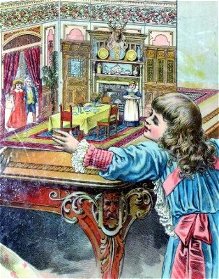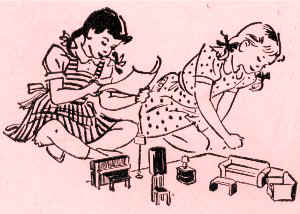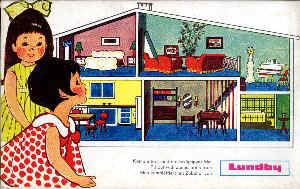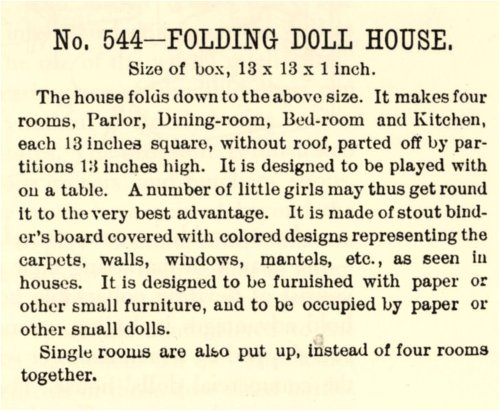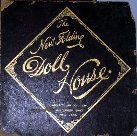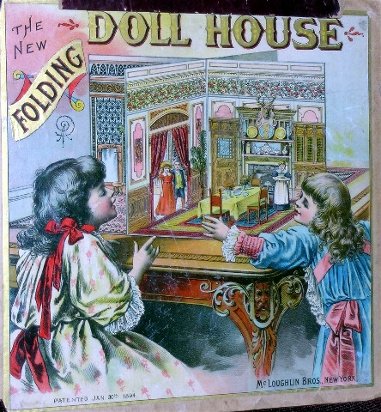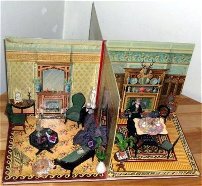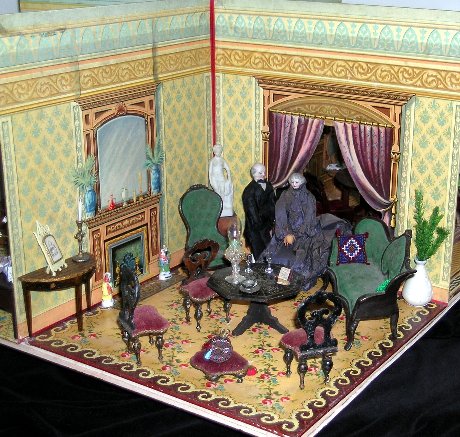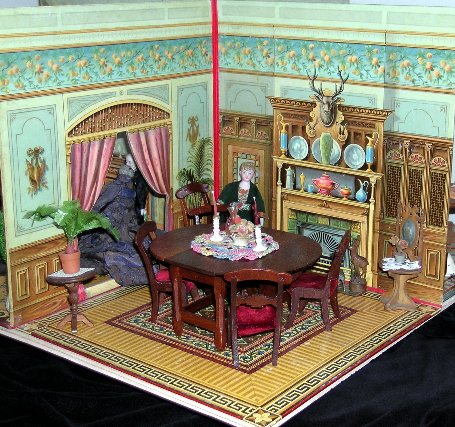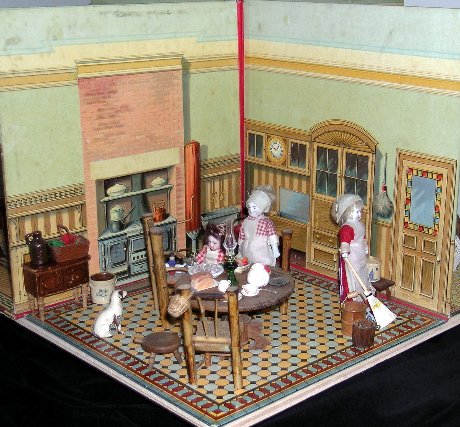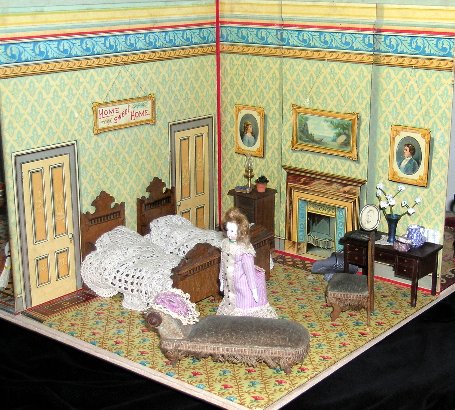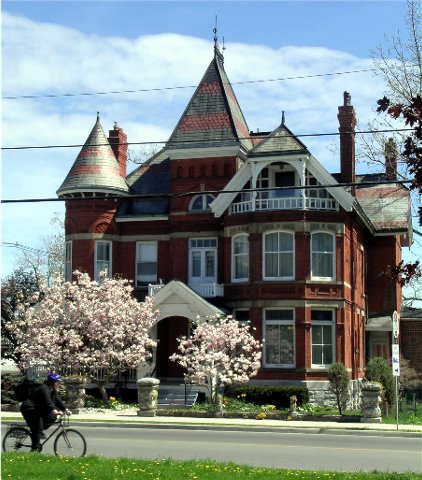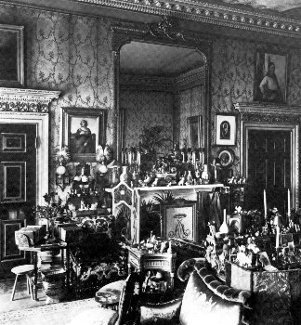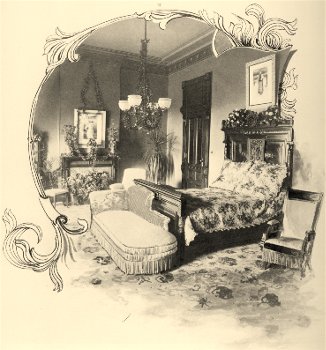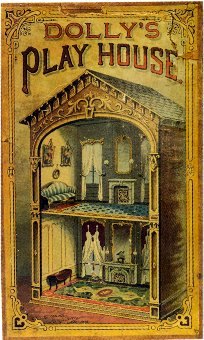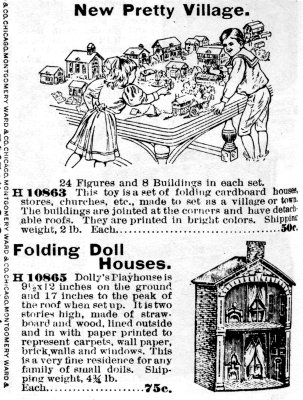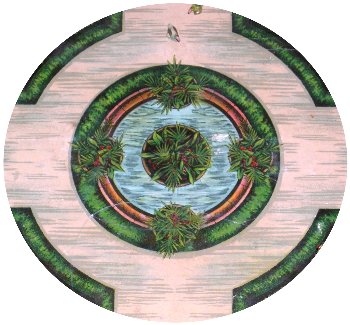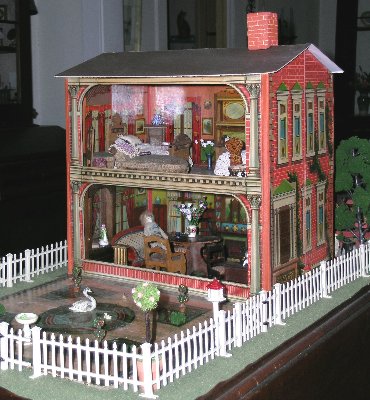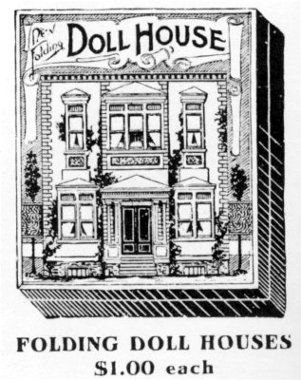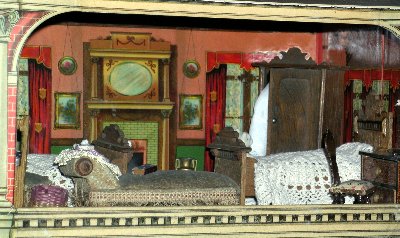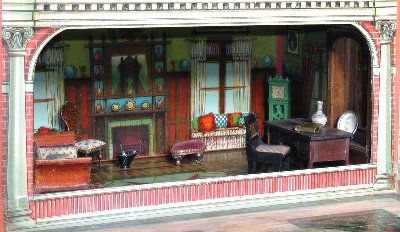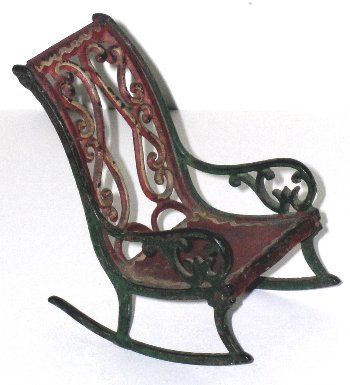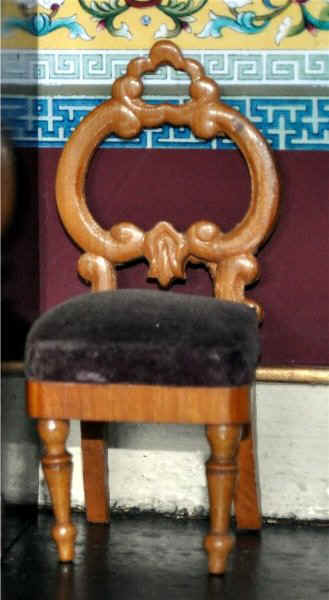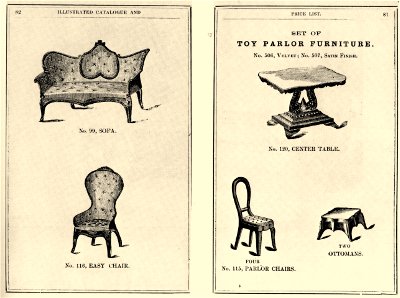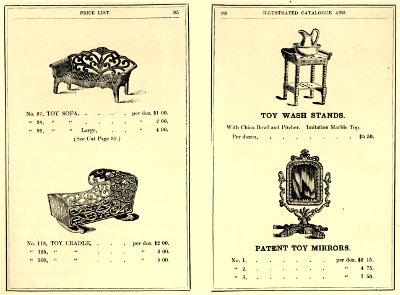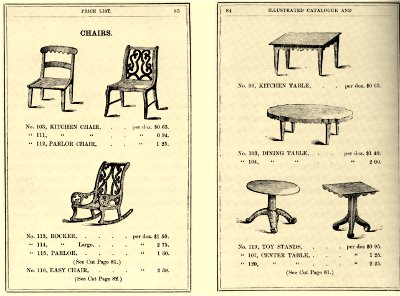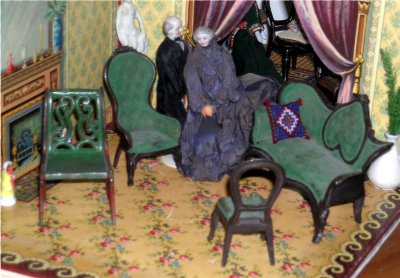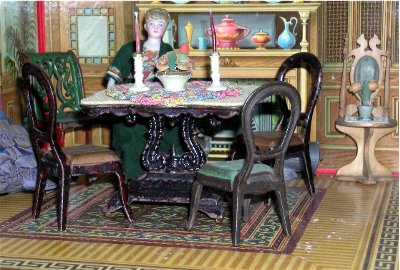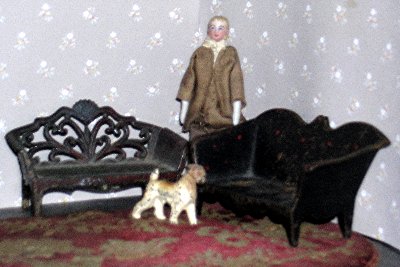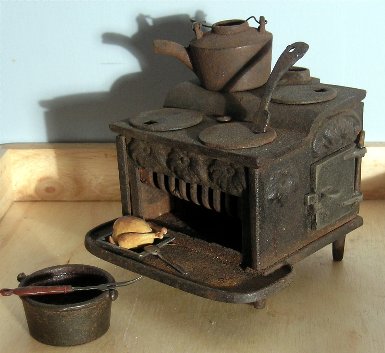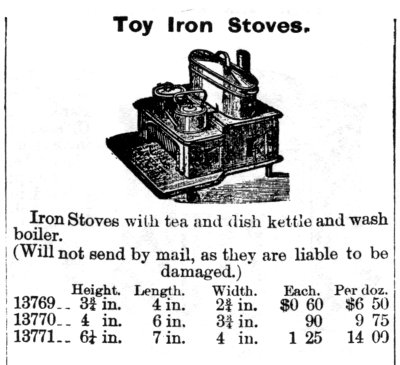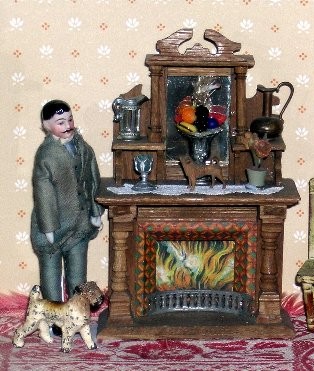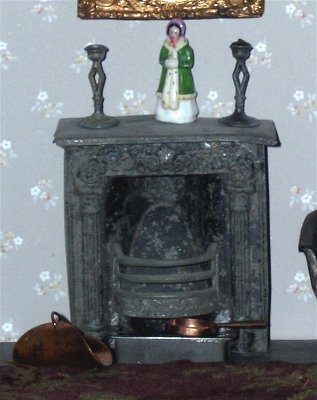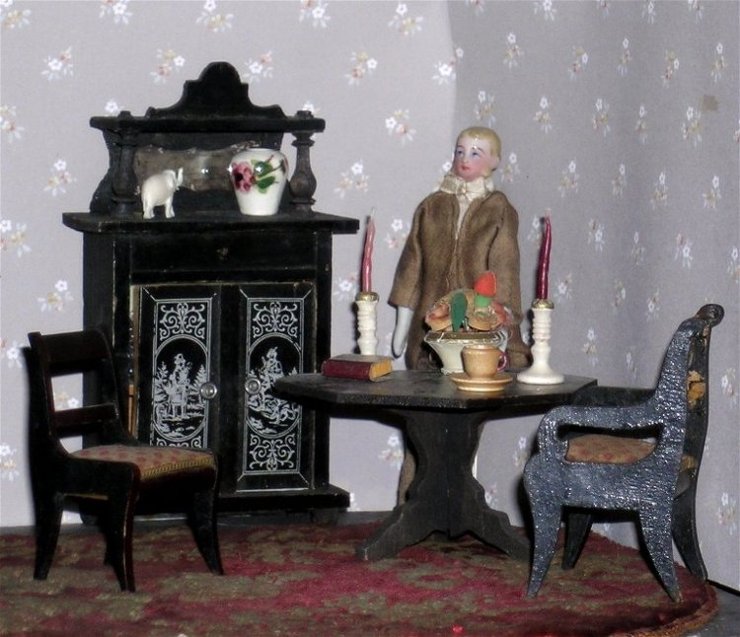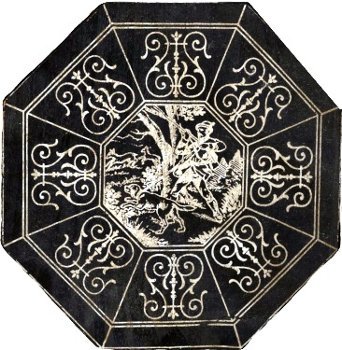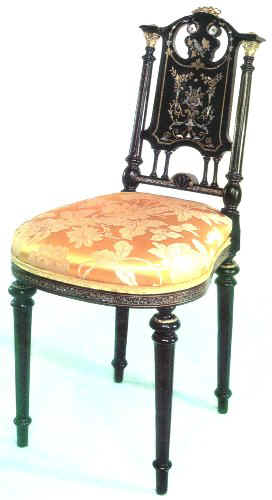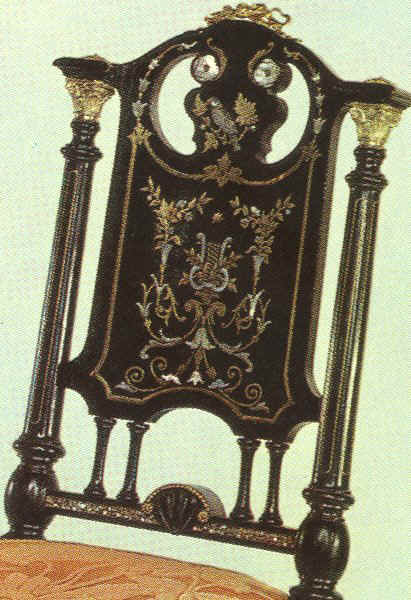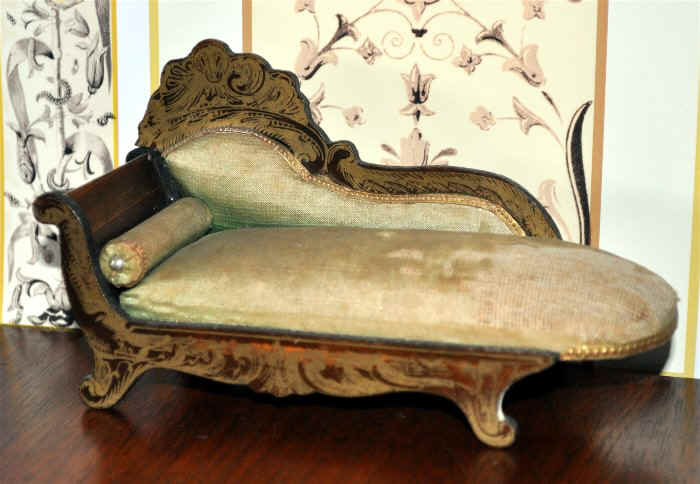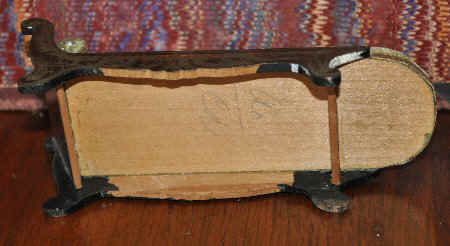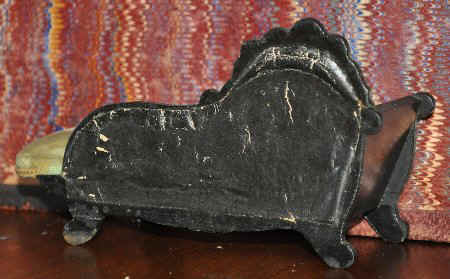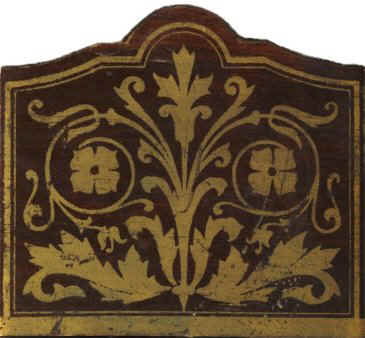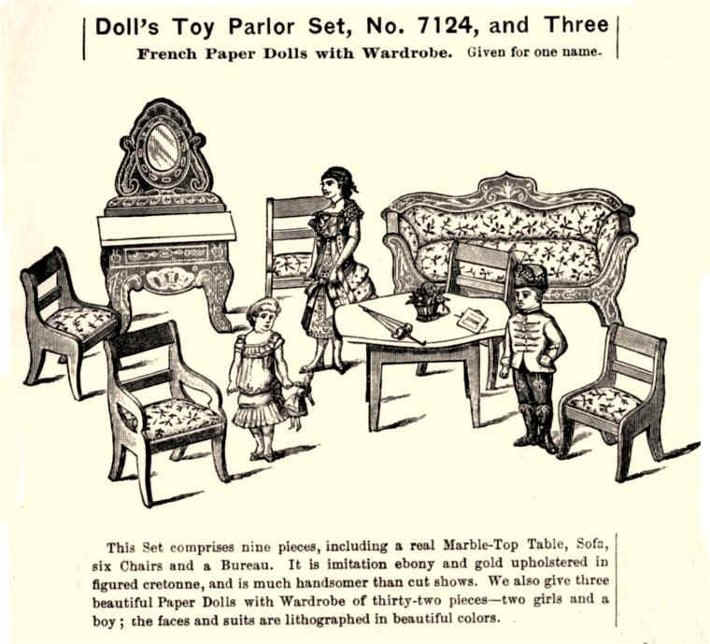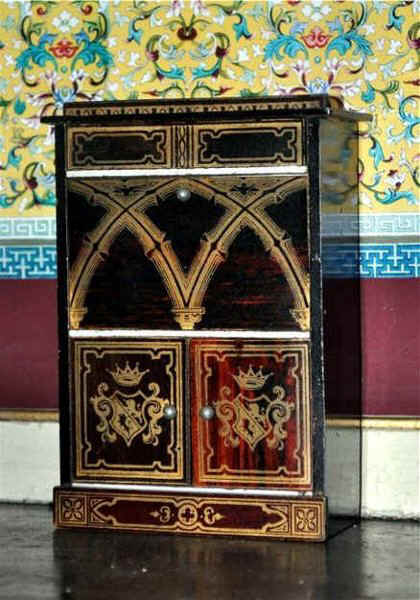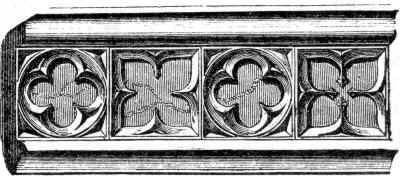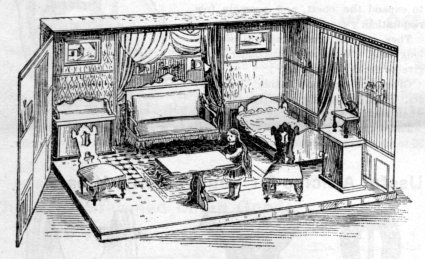|
article by Jennifer McKendry© photography by Jennifer McKendry©
Selected examples of factory and home-made dollhouses and furnishings, illustrating trends in fashion each decade from 1890 to 1990. Please see also the Gallery of Images (link at the bottom of this page)
left: Strombecker 1948 right: McLoughlin 1894
right: Lundby c1966
|
|||||||||||||||||||||||||||||||||||||||||||||||||||
|
part 1: 1920s part 2: late 1920s
part 1: 1960-1990 part 2: 1960-1990
to find the following brands directly, please go to the specified decade by using the links given above (please note that some of the pre 1930 brands are also in the Gallery of Images - link at bottom of page - includes an Index):
home page articles on antiques & vintage select references on dollhouses
note:dollhouse furniture made previous to 1890 is in a separate article EARLY_FURNISHINGS
|
|||||||||||||||||||||||||||||||||||||||||||||||||||
|
The McLoughlin Folding Dollhouse
The
McLoughlin folding dollhouse of 1894
illustrates the important principles characterizing toy manufacturing in the
forthcoming 20th century, namely, factory production, appeal to the middle
class, and ease of shipping; in this case, the four hinged rooms and
corresponding floors could be collapsed to fit flat into a box (left) only 13 by 13 by 1 inches. The
materials were light-weight: coloured lithography
on paper glued to cardboard hinged by red cloth. Located in New York City,
the company manufactured toys from the late 1850s and dollhouses from 1875
into the early 20th century. The foldin
This fine brick Victorian house, built in 1886 in Kingston, Ontario Canada, is the sort of residence one imagines as the outer shell of the McLoughlin rooms. Built for a successful grocer and maintained by servants, it was considered at the time the finest house in the city. One of the exciting aspects of the McLoughlin rooms is the use of full colour, whereas contemporary photographs, such as this Boston bedroom in the 1880s (below right), are monochromatic in sepia or black and white or hand-tinted.
In
real life, posh parlours (above) were rich with with
ornaments. The McLoughlin rooms show the interest
of the trendy in collecting Japanese porcelain during the 1890s; whereas, the
sphere of servants was characterized by long hours and hard work in plainer
surroundings. The rooms suggest how the upper class lived and the lifestyle
to which the middle class aspired. The
McLoughlin Company is also well known for Dolly's
Play House, a two-room house made from 1884 to 1903, and advertised in
the Montgomery Ward catalogue of 1903, which included their "Pretty
Village," a set of folding cardboard houses. Another
collectible house is the Garden House (below) from the first decade of the 20th century. The front
wall is hinged and can be let down onto a table top to reveal two interior,
well decorated, rooms, as well as a formal garden. This house was later
replicated by Milton Bradley (look for the name printed on the lower side).
The colours of the original McLoughlin
are still remarkably brilliant a century later. Detail (below right) ornamental pool in front garden.
The Garden House (here with replacement roof and chimney) with the front wall let down revealing the garden. The two rooms are furnished with German furniture c1900. On the right, as sold for $1 by Woodward & Lothrop in Washington in 1911; the front wall is shown in the upright position..
FURNISHINGS
(note: see also Gallery of Images, section 1 for more pictures of early furnishings - link at bottom of this page)
Cast-iron was of great importance during the
19th century and suited factory production. In true-scale furniture, it was
mainly found in garden benches, chairs, urns and fountains, as well as
interior heating and cooking stoves. Its metallic surface hardly made for
comfortable seating but, with the suspension of belief often applied to
dollhouse furnishings, it was and is acceptable for parlour,
dining and bedroom furniture, particularly when it was formed with the high
quality of design and manufacturing produced in the J.&
E. Stevens factory (founded in 1843) in Connec
The
majority of cast-iron wood stoves
one finds in antique shops or web auctions,
are from the early 20th century (or are reproductions!), but this unusual
example (below
left) is a type found
in the 1880s (see Montgomery Ward ad of 1886 below right). The large iron kettle and
stove-plate lifter came with it. The top rolls into two levels, the oven has
a working side-door, and there is an open area in the lower front for warming
pots and food. Over-sized flowers in high relief decorate the sides. It is a
little large for most dollhouses at 4 inches high x 4½ wide x 4½ deep. (For more on cooking
& eating, please see section 4 of Gallery of Images - link at the bottom
of this page)
1886
Although
most real chimney
pieces (mantels) were of painted or exposed wood or of marble
with iron or brass inserts for coal (which was commonplace even in North
America at this time
The Biedermeier
decorative style in Germany occurred about
1820 to about 1840 but it is likely that much of the dollhouse furniture
described by collectors as "Biedermeier" is
from the second half of the 19th century (above).
Germany was an important manufacturer of toys at this time. The term refers
to furnishings made for the bourgeoisie in a fairly severe form reflecting classicism
but lightened in appearance by inlay: dark lines set into blond wood or light
lines set into dark woo
The
forms are Biedermeier but the decoration is
___________________________ actual sidechair made in New York 1865-1870, marquetry, brass beading, mother-of-pearl ornament; Victorian influenced Classical style
chaise lounge with transfer "inlay" decoration and painted imitation rosewood over deal (a secondary wood), visible on the bottom, which has pencil markings, likely indicating the model number
just under 5½ inches long
the back is covered by a painted piece of heavy paper (on some pieces printed as if wallpaper or book end-papers)
right: bed footboard in gilt "inlay" on "rosewood"
below: a parlour set in "imitation ebony and gold" from Youth's Companion, 1886-89.
The base has quatrefoil decorations derived from medieval church decorations, as seen in this band of panelling c1420.
left: lithographed room, 14.5 x 10 inches, and set of imitation walnut furniture with blue upholstery offered for sale for $1 in the Youth's Companion of 1890. Note the plump seats with fringes and wide, boldly turned chair legs, typical of the period. Curved ornamental upper backs on the couch and sideboard are also typical. The table pedestal is made from two thin cut-out boards fitted at right angles. The china doll with long "real hair" was included. Although the origin of this room and furnishings is not given, Germany is a reasonable guess.
(note: see also Gallery of Images, section 1 for more pictures of early furnishings, section 2 for early dollhouses, section 4 for cooking & eating: kitchens & dining rooms & section 5 for parlours - link at bottom of this page)
PLEASE CLICK ON 1900-1910 (this article is divided into sections to make loading the images more manageable and to allow the reader to go directly to a time period)
(to jump to a particular time period in the history of dollhouses & furnishings: 1910 to 1920 part 1: 1920s part 2: late 1920s part 1: 1930s part 2: 1930s 1940s 1950s part 1: 1960-1990 part 2: 1960-1990 )
top of page selected references on dollhouses home page
GALLERY OF IMAGES of dollhouses & furnishings
|
